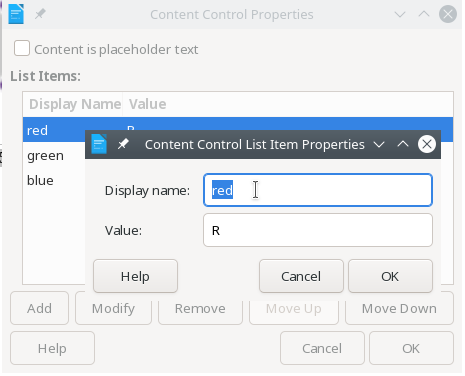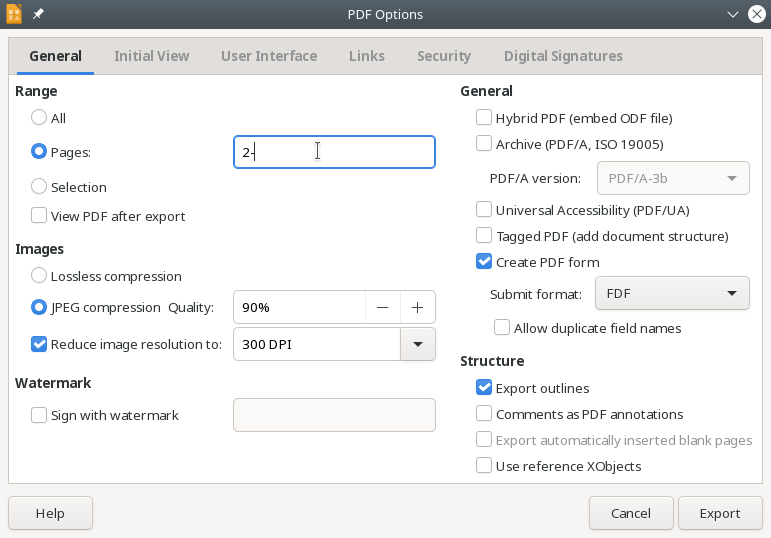Estimated read time: 2 minutes
Writer now supports a 6th content control type: it is possible to insert a plain text content control.
This work is primarily for Collabora Online, done as a HackWeek project, but the feature is fully available in desktop Writer as well.
Motivation¶

Writer users can put a content control around a piece of rich text, see Content controls in Writer: dropdown, picture and date types for the first five types.
The next step in this journey is plain text: even if one of the big advantages of content controls over input fields is that they allow rich formatting, sometimes you want to restrict this. For example, if one has to fill in their name, then it makes no sense to mark the family name as bold while leaving the given name as non-bold. This would just lead to inconsistent look.
Results so far¶
There is now a new Form → Content Controls → Insert Plain Text Content Control menu item to create a plain text content control. If you try to make a selection that is a subset of the text inside the content control and you try to format it, the whole text in the content control is formatted to maintain the invariant that plain text has no formatting itself, just the formatting of the whole content control.
As usual, you can delete this content control later. You can also load/save it to ODT/DOCX and it's preserved.
How is this implemented?¶
If you would like to know a bit more about how this works, continue reading... :-)
As usual, the high-level problem was addressed by a series of small changes:
- sw content controls, plain text: add doc model & UNO API
- sw content controls, plain text: apply formatting to the entire contents
- sw content controls, plain text: add ODT filter
- sw: fix heap-use-after-free in SwTextNode::InsertHint()
- sw content controls, plain text: add DOCX export
- sw content controls, plain text: add DOCX import
- sw content controls, plain text: add insert UI
Want to start using this?¶
You can get a snapshot / demo of Collabora Office 22.05 and try it out yourself right now: try unstable snapshot. Collabora intends to continue supporting and contributing to LibreOffice, the code is merged so we expect all of this work will be available in TDF's next release too (7.5).











































